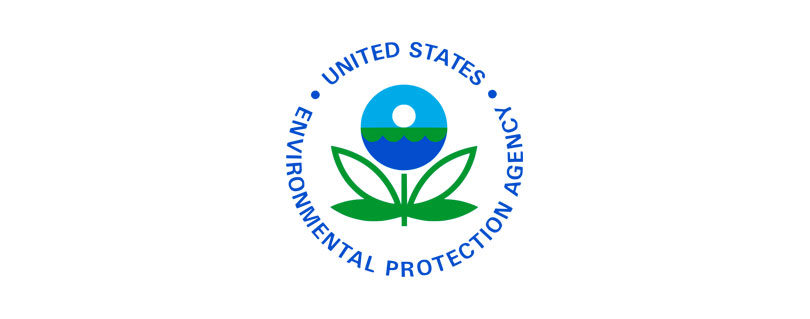Toxic Chemical Releases in 2021 Remained Below Pre-Pandemic Levels According to New Toxics Release Inventory Data
Publilshed by the U.S. Environmental Protection Agency (EPA)
CHICAGO (March 16, 2023) Today, the U.S. Environmental Protection Agency (EPA) released its 2021 Toxics Release Inventory (TRI) National Analysis, which shows that environmental releases of TRI chemicals from facilities covered by the program remained below pre-pandemic levels and releases in 2021 are 10% lower than 2012 releases, even with an 8% increase from 2020 to 2021. The report also shows that there has been long-term decline in releases from Region 5, which includes Illinois, Indiana, Michigan, Minnesota, Ohio, Wisconsin and 35 Tribal Nations. In 2021, facilities managed 89% of their TRI chemical waste through preferred practices such as recycling, energy recovery, and treatment, while reporting that they released 11% of their TRI chemical waste into the environment.
“Over the last 10 years, we have worked with industries in our Region to reduce releases of toxic chemicals by nearly 20 percent,” said Region 5 Administrator Debra Shore. “We will continue to encourage our regional industries to incorporate innovative and proactive measures to tackle pollution and protect public health, especially in Environmental Justice communities.”
In 2021, 93% of TRI chemical waste from facilities in Region 5 was managed through preferable techniques such as recycling, combustion for energy recovery, and treatment, while only 7% was released into the environment. Even though facilities in Region 5 reported releasing 415.1 million pounds of TRI chemicals into the environment in 2021, which is a 10.9% increase compared to 2020, the overall releases of TRI chemicals in Region 5 have decreased by 19.6% from 2012 to 2021. This was driven by large reductions in emissions to air and off-site transfers. In 2021, 7.8% of facilities in Region 5 implemented new source reduction activities. Among sectors with the highest source reduction reporting rates were computer and electronic part manufacturing and furniture manufacturing.
The 2021 TRI National Analysis summarizes TRI chemical waste management activities, including releases, that occurred during calendar year 2021. More than 21,000 facilities submitted reports on 531 chemicals requiring TRI reporting that they released into the environment or otherwise managed as waste. EPA, states and tribes receive TRI data from facilities in sectors such as manufacturing, mining, electric utilities and commercial hazardous waste management.
The 2021 Analysis features updated visualizations and analytical tools to make data more useful and accessible to communities, including the option to view data by region and watershed. EPA has also updated demographic information in the “Where You Live” mapping tool and in the Chemical Profiles section. Readers can view facility locations with overlayed demographic data to identify potential exposure to TRI chemical releases in vulnerable communities. Community groups, policymakers, and other stakeholders can use this data, along with other environmental data, to better understand which communities may experience a disproportionate pollution burden and take action at the local level.
In addition, this year the TRI National Analysis Sector Profiles highlights the plastic products manufacturing sector alongside the standard profiles for electric utilities, chemical manufacturing, and metal mining. This allows readers to learn about releases and waste management of TRI chemicals, as well as greenhouse gas emissions, from facilities in these sectors.
EPA is holding a public webinar on March 28, 2023, to give an overview of the 2021 TRI National Analysis. Register for the webinar.
To view the 2021 TRI National Analysis, including local data and analyses, visit www.epa.gov/trinationalanalysis.
Notable Trends in 2021
The National Analysis shows a 24% increase in the number of new pollution reduction activities facilities initiated from 2020 to 2021—a strong rebound after the decrease seen from 2019 to 2020. These activities include facilities implementing strategies like replacing TRI chemicals with less hazardous alternatives or reducing the amount of scrap they produce. Through both existing programs and the Bipartisan Infrastructure Law, EPA offers grant opportunities to state and tribal technical assistance providers to help prevent pollution.
Industry professionals can also look at TRI reporting on pollution prevention to learn about best practices implemented at facilities.
Ethylene Oxide Reporting
TRI reporting also shows a 45% decrease in ethylene oxide releases from 2012 to 2021, driven by decreased air emissions. Although there was a 15% increase in releases compared to 2020, quantities of ethylene oxide released in 2021 are lower than pre-pandemic quantities from 2019. EPA also expanded reporting requirements for ethylene oxide and other chemicals to include additional facilities. Reporting from these facilities will appear for the first time in next year’s National Analyses.
PFAS Reporting
For the second time, the TRI National Analysis includes reporting on perfluoroalkyl substances (PFAS) following the 2020 National Defense Authorization Act. For Reporting Year 2021, 176 PFAS were reportable to TRI. Facilities reported managing 1.3 million pounds of these chemicals as waste. This is an increase from the 800,000 pounds in 2020 and is largely due to reporting on one PFAS, perfluorooctyl iodide, which EPA began requiring facilities to report in 2021. Most of the facilities that manage PFAS operate in the chemical manufacturing and hazardous waste management sectors. The hazardous waste management sector accounted for roughly 80% of the 108,334 pounds of PFAS released into the environment, primarily to regulated landfills.
Last December, EPA proposed a rule that would improve reporting on PFAS to TRI by eliminating an exemption that allows facilities to avoid reporting information on PFAS when those chemicals are used in small, or de minimis, concentrations. Because PFAS are used at low concentrations in many products, this rule would ensure covered industry sectors and federal facilities that make or use TRI-listed PFAS will no longer be able to rely on the de minimis exemption to avoid disclosing their PFAS releases and other waste management quantities for these chemicals.
Read the full article at: https://www.epa.gov/newsreleases/toxic-chemical-releases-2021-remained-below-pre-pandemic-levels-according-new-toxics-0



